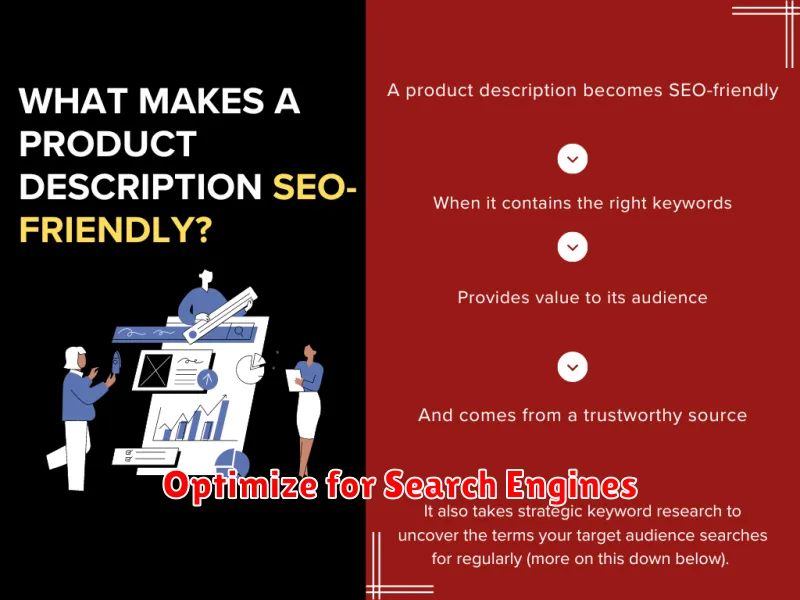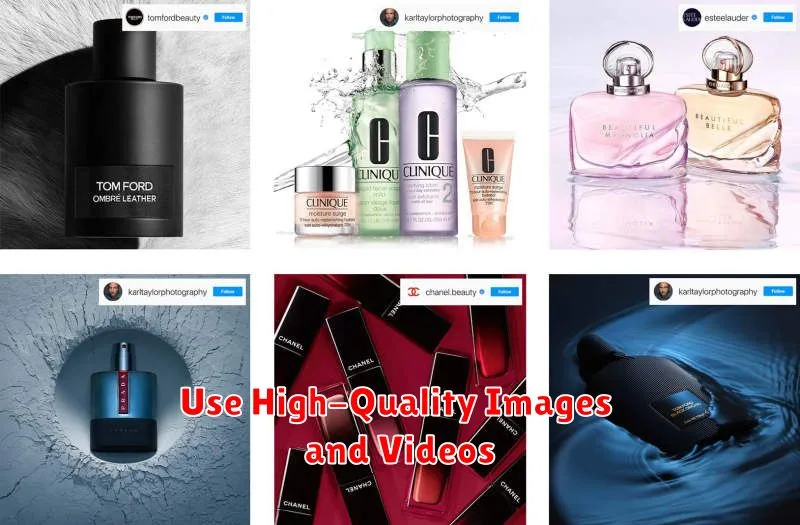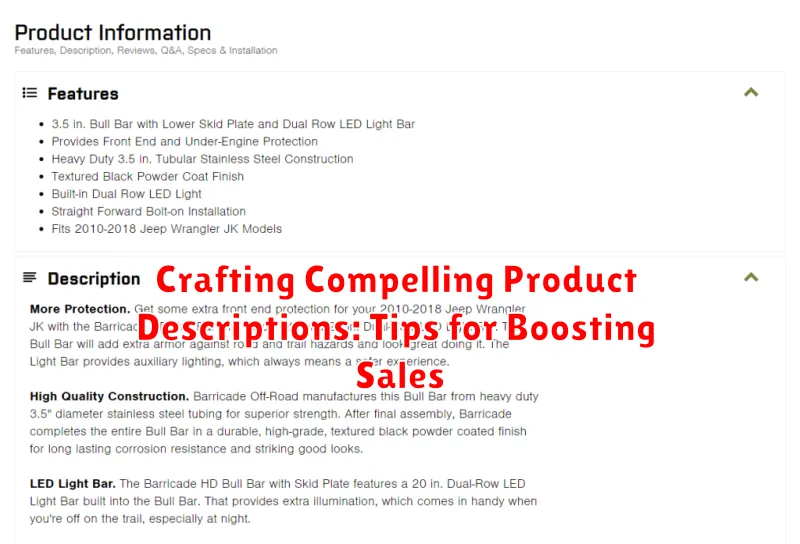In the competitive landscape of e-commerce, crafting compelling product descriptions is paramount to success. A well-written product description can be the deciding factor between a conversion and a lost sale. It’s more than just listing features; it’s about painting a picture of the product’s value and how it can enrich the lives of your target audience. This article will delve into proven strategies and actionable tips for boosting sales through the art of persuasive product descriptions. Learn how to transform mundane product listings into engaging narratives that resonate with potential buyers and drive conversions.
From understanding your target audience to utilizing powerful keywords and employing persuasive language, we’ll uncover the secrets to writing descriptions that sell. Whether you’re a seasoned e-commerce entrepreneur or just starting out, mastering the art of the product description is essential for achieving higher conversion rates and ultimately, boosting sales. Discover the power of compelling copy and unlock the potential to transform your product listings into powerful sales tools.
Know Your Target Audience
Before crafting even a single word of your product description, you must understand your target audience. Who are they? What are their needs, pain points, and desires? What language do they use? Answering these questions is crucial to creating a description that resonates and motivates them to purchase.
Consider factors such as:
- Demographics: Age, gender, location, income level, education.
- Psychographics: Lifestyle, values, interests, attitudes.
- Buying behavior: Where do they shop? What motivates their purchases? Are they price-sensitive or looking for premium quality?
By understanding your audience’s profile, you can tailor your language, tone, and focus to effectively communicate the value proposition of your product and persuade them that it’s the perfect solution for their needs.
Highlight Key Features and Benefits
A product’s features are its factual attributes, while benefits explain how those features improve a customer’s life. Focus on the latter. Customers don’t buy features; they buy solutions. Clearly and concisely present how each feature translates into a tangible benefit.
For example, instead of simply stating “500GB hard drive,” highlight the benefit: “Store thousands of photos and videos with our spacious 500GB hard drive.” This approach connects with the customer’s needs and desires.
Use strong action verbs and quantifiable data whenever possible. Instead of saying “long-lasting battery,” try “Enjoy up to 10 hours of uninterrupted use on a single charge.” Numbers and concrete examples add weight to your descriptions and make the benefits more persuasive.
Consider using a bullet-point list or a table to neatly organize features and their corresponding benefits. This makes it easier for customers to quickly scan and grasp the value proposition.
Use Vivid Language and Sensory Details
Engage your readers’ imaginations by using descriptive language that appeals to their senses. Instead of simply stating facts, paint a picture with your words. Help them visualize the product and experience it in their minds.
Consider how the product feels, smells, tastes, sounds, or looks. For example, instead of saying “soft blanket,” describe it as a “plush, velvety blanket that feels like a warm embrace.” Instead of “red dress,” try “a vibrant crimson dress that shimmers in the light.”
Sensory details create an emotional connection. They transform a simple product description into an experience. This emotional connection can be the deciding factor in a customer’s purchase decision.
Avoid generic adjectives like “good,” “nice,” or “great.” Instead, opt for powerful, descriptive words that accurately convey the product’s unique qualities. A thesaurus can be a helpful tool for finding just the right word.
Tell a Story
Connect with your audience on an emotional level by weaving a narrative around your product. Don’t just list features; illustrate how those features translate into a better experience for the customer. A compelling story can make your product more relatable and desirable.
Consider incorporating these elements:
- The Problem: Briefly describe the pain point your product solves.
- The Solution: Explain how your product addresses that problem.
- The Outcome: Paint a picture of the positive change the customer will experience.
For example, instead of simply stating that a backpack is “durable,” describe how it withstood the rigors of a weekend hiking trip, keeping the user’s belongings safe and dry. This approach creates a more vivid and engaging image in the customer’s mind.
Optimize for Search Engines

Optimizing your product descriptions for search engines is crucial for driving organic traffic and increasing visibility. By incorporating relevant keywords, you can improve your product’s ranking in search results.
Keyword Research: Begin by identifying relevant keywords that potential customers might use when searching for products like yours. Tools like Google Keyword Planner can assist in this process. Focus on long-tail keywords, which are more specific and have less competition.
Strategic Keyword Placement: Incorporate your chosen keywords naturally within the product title, description, and bullet points. Avoid keyword stuffing, as this can negatively impact your search ranking. Prioritize readability and a natural flow.
Meta Descriptions: Craft compelling meta descriptions that accurately reflect the product’s value proposition and include relevant keywords. While meta descriptions don’t directly impact rankings, they can influence click-through rates from search results.
Maintain a Consistent Brand Voice
Brand voice is the personality and tone conveyed in your communication. Maintaining consistency across all product descriptions strengthens brand recognition and builds trust with customers.
Consider your target audience and the overall image you want to project. Are you aiming for sophisticated and elegant, or friendly and approachable? This choice will inform your language and style.
Develop a style guide to ensure consistency. This guide should outline specific vocabulary, sentence structure preferences, and the overall tone to be used. For example, are contractions acceptable? Should descriptions be strictly factual, or is there room for humor or storytelling?
Regularly review product descriptions to ensure they align with your established brand voice. This process helps maintain a unified and professional image across your entire product line.
Use High-Quality Images and Videos

Visuals are crucial for showcasing your product effectively. High-quality images and videos can significantly impact a customer’s purchasing decision. They provide a tangible representation of your product and allow customers to visualize owning and using it.
Invest in professional photography or videography to capture your product’s best features. Images should be clear, well-lit, and accurately represent the product’s color and texture. Consider showcasing the product from multiple angles and in different contexts to give customers a comprehensive view.
Videos can be particularly effective in demonstrating a product’s functionality or highlighting its key features. Keep videos concise and engaging, focusing on the benefits and value proposition of the product.
Ensure images and videos are optimized for fast loading times to prevent frustrating potential customers. Large file sizes can lead to slow loading speeds, negatively impacting the user experience and potentially leading to lost sales.
Include Customer Reviews and Testimonials
Social proof is a powerful tool in influencing purchase decisions. Including customer reviews and testimonials directly within your product descriptions can significantly increase buyer confidence.
Showcase positive experiences to demonstrate the value and quality of your product. Highlight reviews that mention specific benefits or address common customer concerns. For example, if durability is a key feature, emphasize reviews that praise the product’s longevity.
Consider incorporating a star rating system alongside the reviews for a quick visual representation of overall customer satisfaction. Additionally, featuring video testimonials can add a more personal and engaging element to your product descriptions.
Be sure to moderate reviews and address any negative feedback professionally. This shows potential customers that you value their opinions and are committed to providing excellent customer service.
Make it Easy to Read and Scan
In today’s fast-paced world, consumers rarely read product descriptions word-for-word. They scan for key information. Make it easy for them to find what they need quickly.
Use short paragraphs, bullet points, and headings to break up large blocks of text. This makes the description more visually appealing and easier to digest.
Highlight key features and benefits using bold text or other visual cues. This helps customers quickly identify the most important information. Consider using a table to summarize key specifications, particularly for technical products.
Employ white space effectively. Adequate spacing between lines and paragraphs prevents the description from feeling cluttered and overwhelming.

